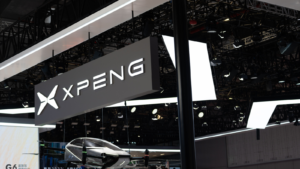The market for self-driving stocks is projected to have significant growth. As per Precedence Research, the global autonomous vehicle market, valued at $158.3 billion in 2023, is expected to reach $2,752 billion by 2033.
Therefore, investing in self-driving stocks now could be akin to investing in the early days of the internet or smartphones €”potentially rewarding but not without risks. As the technology moves closer to widespread adoption, the companies that can navigate the complex landscape of regulations and successfully innovate in their tech offerings are likely to emerge as leaders. Here are three self-driving stocks that contend beyond participating in the race toward automation and could dominate the market.
BYD (BYDDY)

BYD (OTCMKTS:BYDDY) stands out not only as a leader in China but also as a burgeoning global force in the industry.
BYD’s ascent to the top of the electric vehicle market remains underscored by its impressive sales figures and strategic market presence. In 2023, BYD solidified its position as the world’s largest EV manufacturer by sales volume, outpacing competitors like Tesla and Volkswagen.
This achievement is a testament to BYD’s expansive product line. The company has the ability to cater to a broad range of consumers with models such as the Seagull, priced under $10,000, which significantly undercuts offerings from competitors.
BYD’s vertical integration strategy has enabled it to control much of its supply chain, reducing costs and enhancing production efficiencies. This approach not only supports its low pricing strategy but also mitigates risks associated with supply chain disruptions.
Financially, BYD has demonstrated robust growth, with its revenues and profits showing upward trajectories, supported by a strong balance sheet with manageable debt levels.
Toyota (TM)

Toyota (NYSE:TM) plans to introduce a range of fully electric models, aiming to ensure that every model in its lineup has an electrified version by 2025. With a cautious but steady approach to the EV market, Toyota aims to balance growth with sustainability, leveraging its existing strengths in hybrid technology and comprehensive market presence.
Toyota recently reported an impressive financial performance with record revenues of $298 billion and net income of $32.7 billion for the fiscal year ending March 30. This marks a significant upswing, nearly doubling the operating profit from the previous year to $34.5 billion, making Toyota the first Japanese company to surpass the 5 trillion yen mark.
Despite facing fierce competition from Tesla and other automakers who are aggressively pursuing electric vehicles, Toyota’s broad portfolio and global manufacturing presence provide a unique competitive advantage. Moreover, its strategic partnerships in Asia and ongoing innovations, such as the development of solid-state batteries, position it well for future industry shifts.
XPeng (XPEV)

XPeng (NYSE:XPEV) is a prominent player in the burgeoning Chinese electric vehicle market. The company’s recent performance reflects broader industry challenges, including aggressive competition and regulatory pressures in the EV sector. However, the company’s proactive strategies to mitigate these challenges are noteworthy.
XPeng’s expansion into European markets signals a strategic push to diversify its market base beyond the saturated Chinese market. This move, while risky, could open up new revenue streams and reduce the company’s dependency on its domestic market.
The company’s upcoming vehicle launches, such as the highly anticipated Mona model, will cater to a broader market segment. Priced competitively under ¥150,000, the Mona aims to deliver superior performance metrics that could make it a formidable contender. This is especially critical for its competition against established models like the BYD Atto 3. This strategic pricing stands poised to tap into the significant middle-market consumer base in China. As a result, it could potentially drive volume growth and improve market share.
On the date of publication, Mohammed Saqib did not hold (either directly or indirectly) any positions in the securities mentioned in this article. The opinions expressed in this article are those of the writer, subject to the InvestorPlace.com Publishing Guidelines.
On the date of publication, the responsible editor did not have (either directly or
indirectly) any positions in the securities mentioned in this article.
Mohammed Saqib is a research analyst with experience in equity research and financial modeling. He has extensively covered stocks listed in the tech sector using fundamental analysis as the cornerstone of his approach. Currently pursuing a master’s degree in finance, Saqib is dedicated to obtaining the CFA charter to augment his expertise in the field further.
